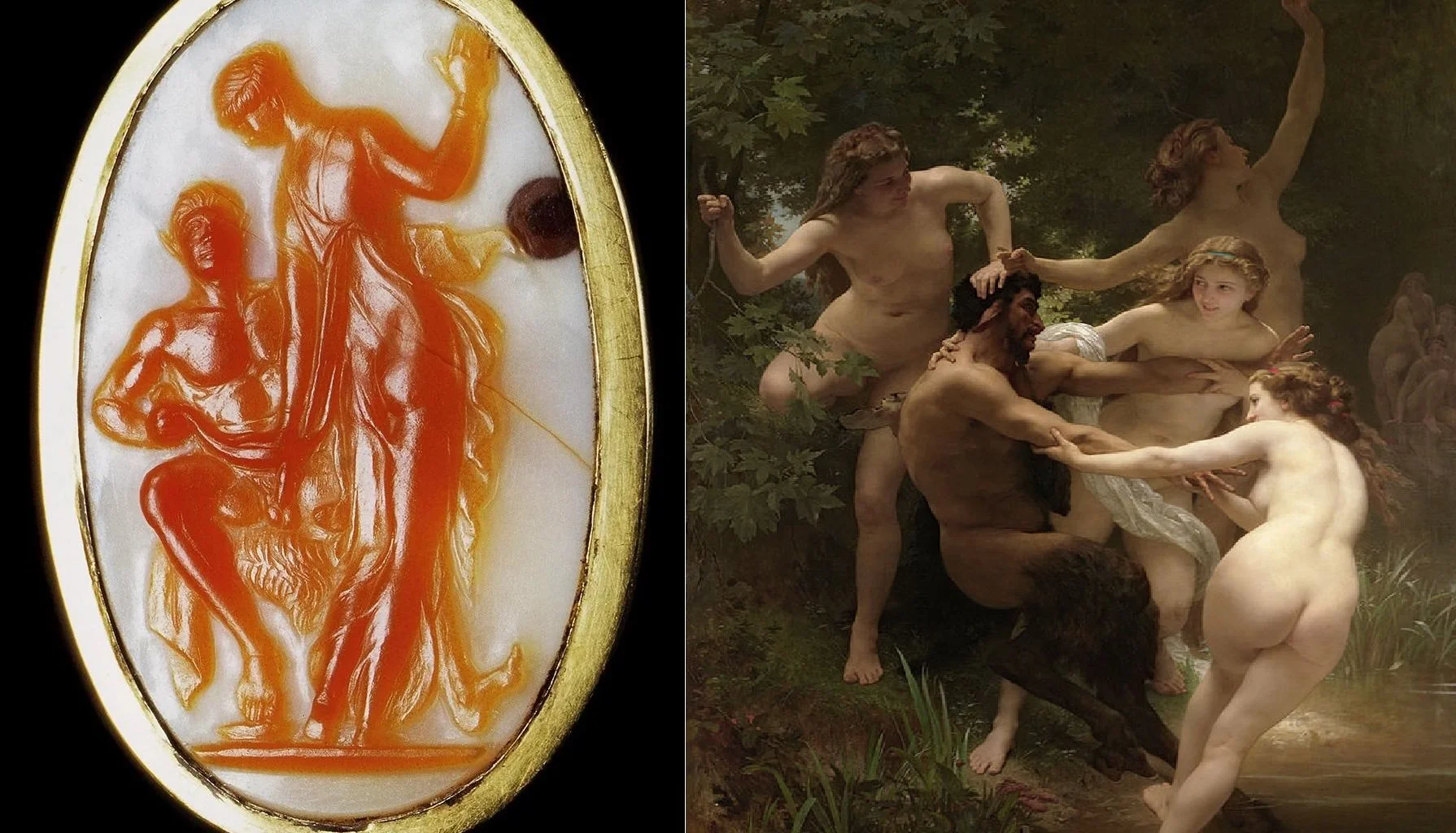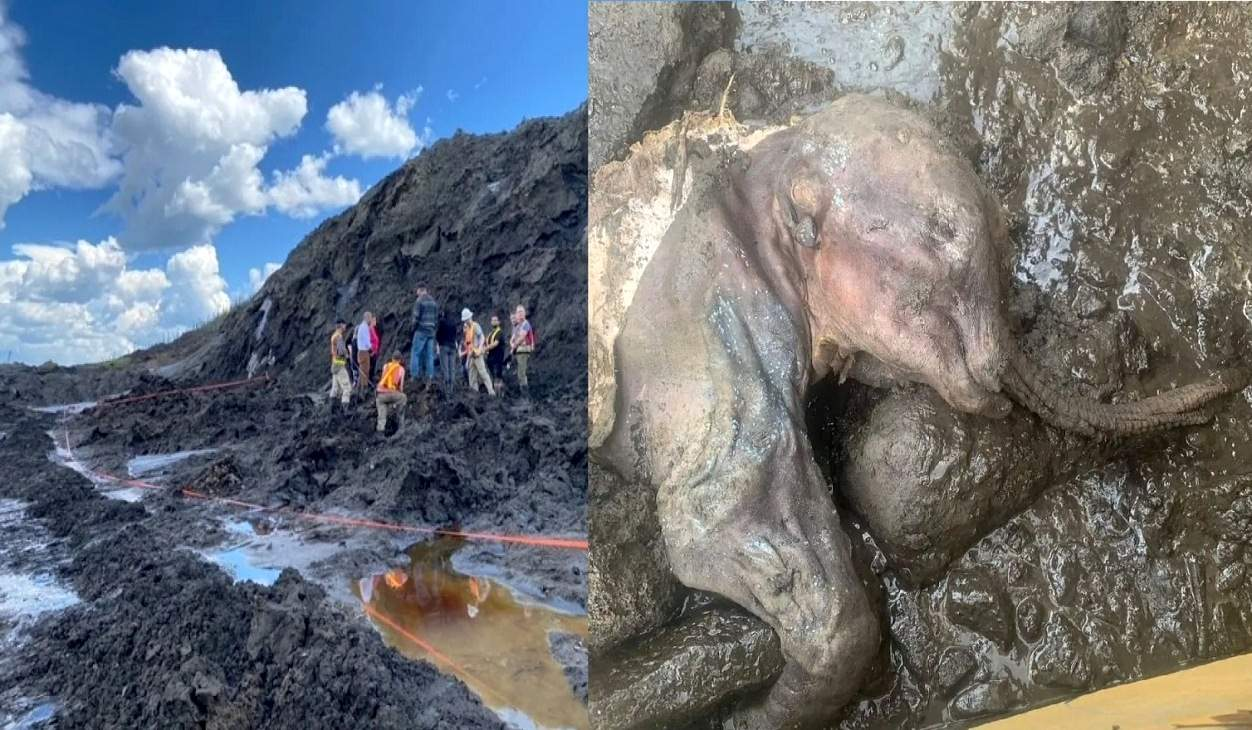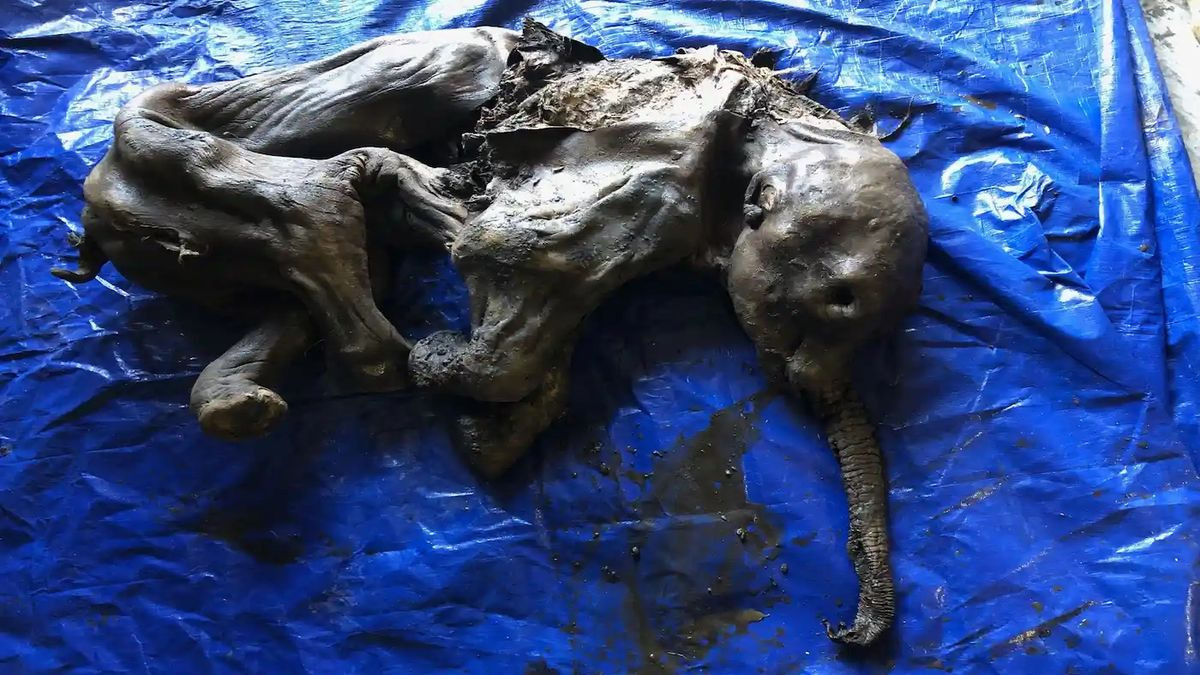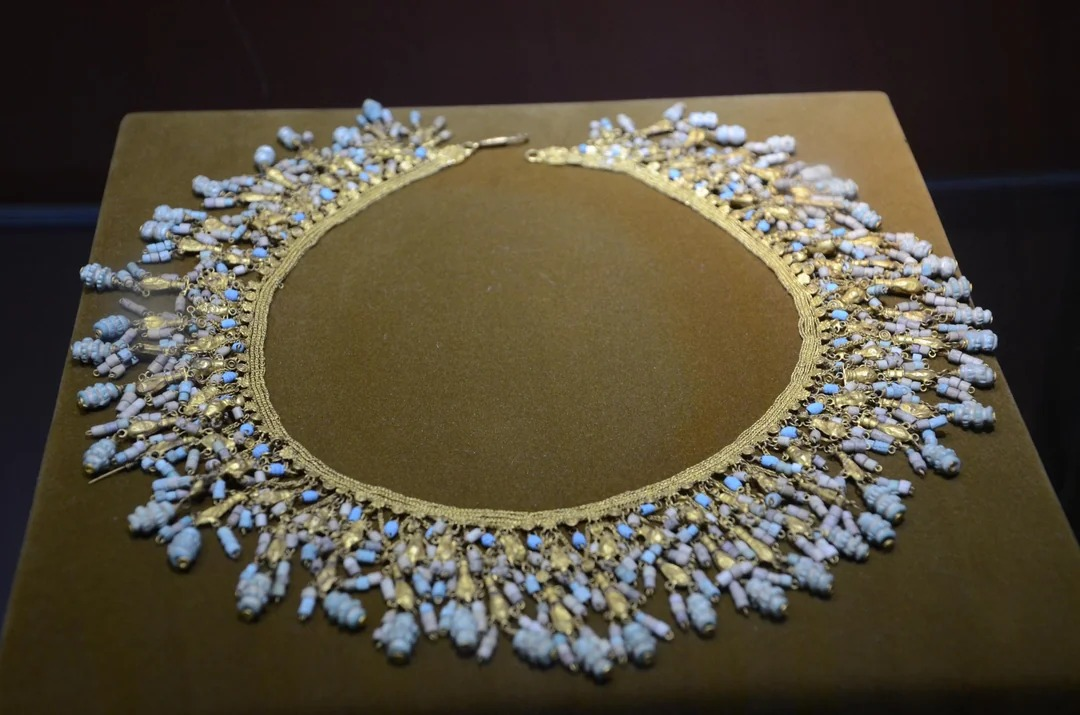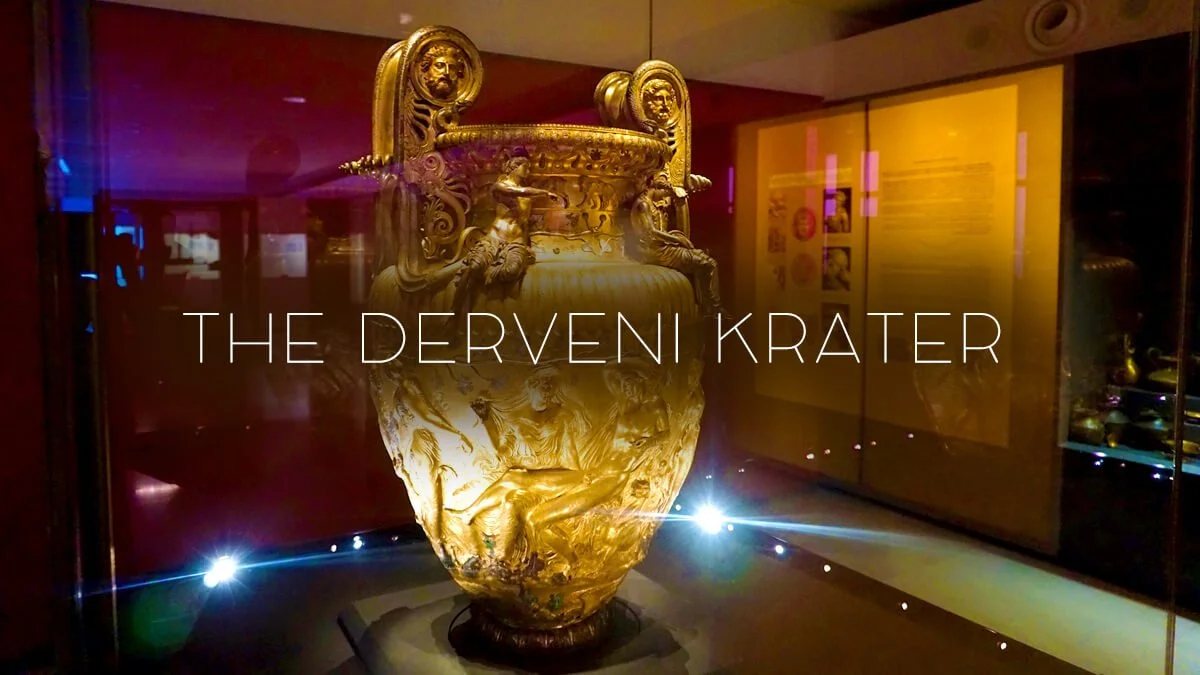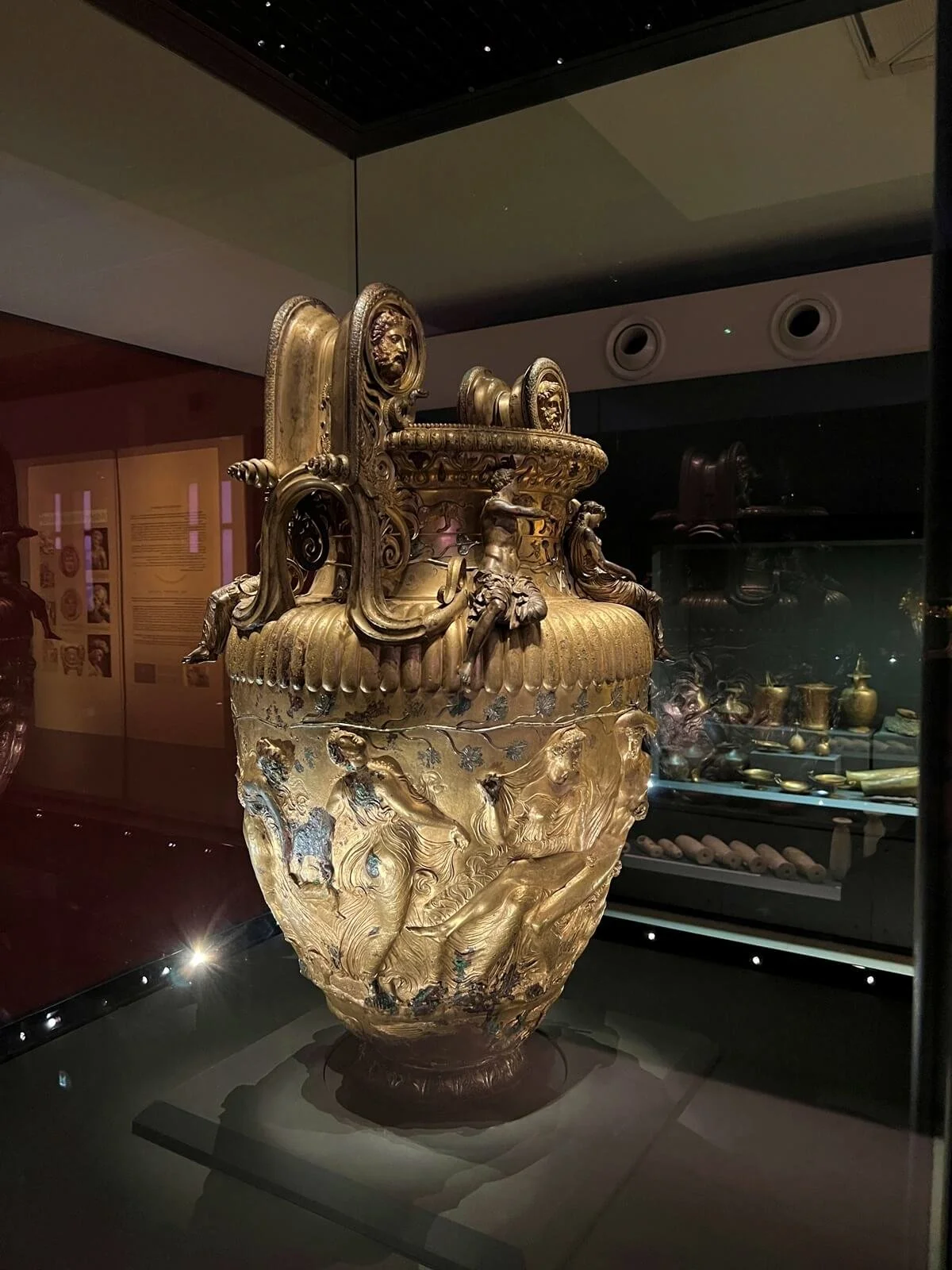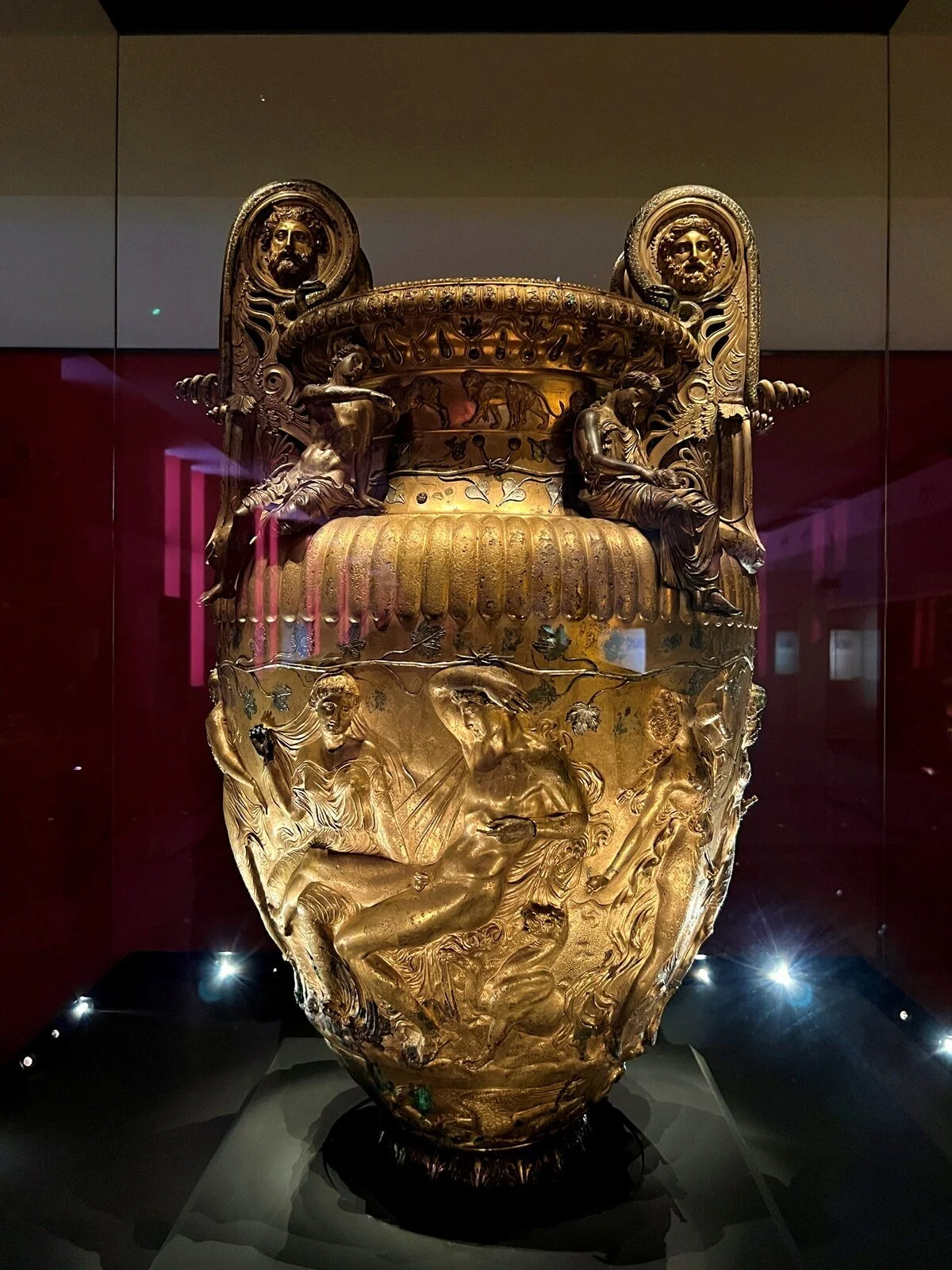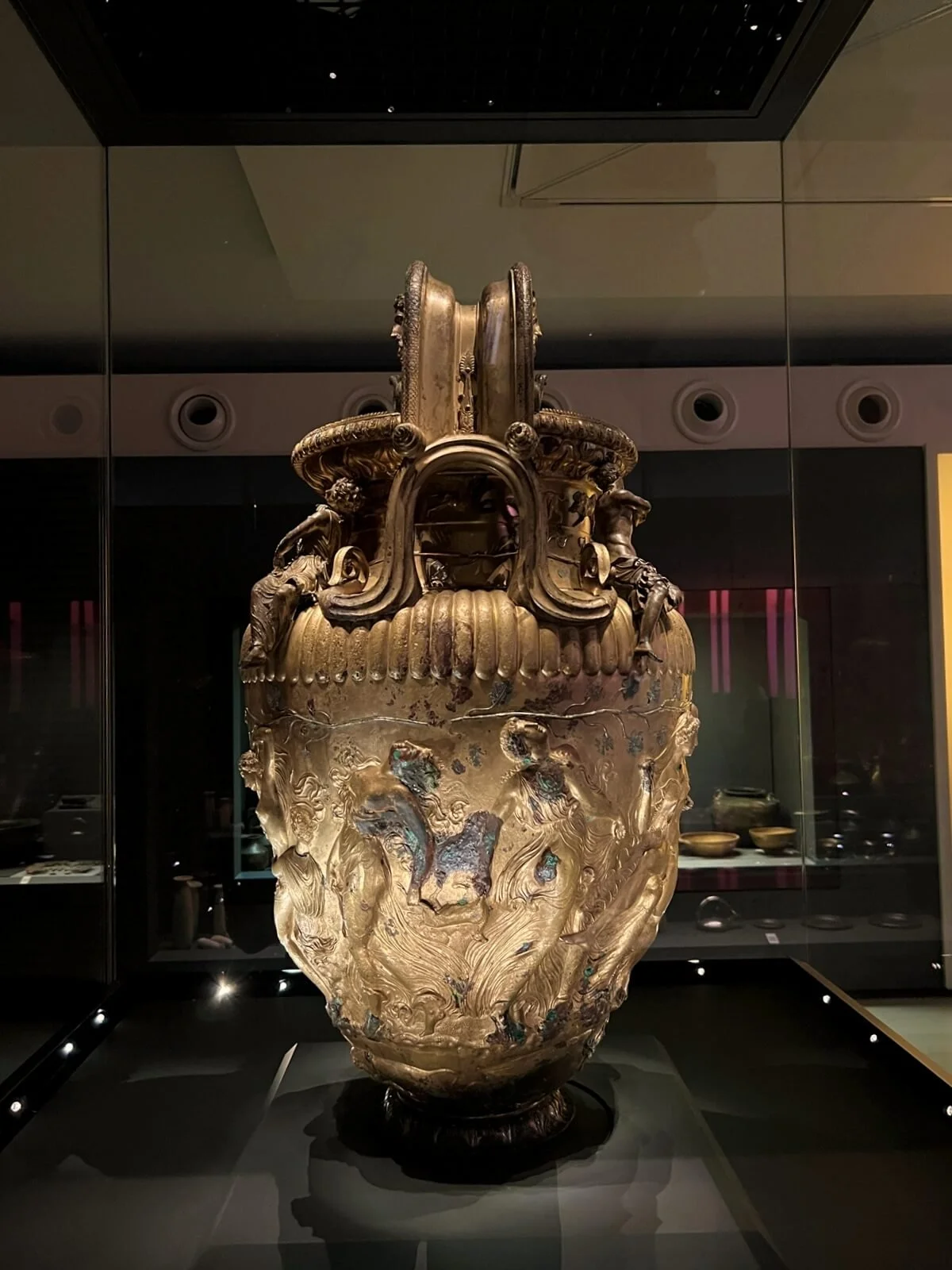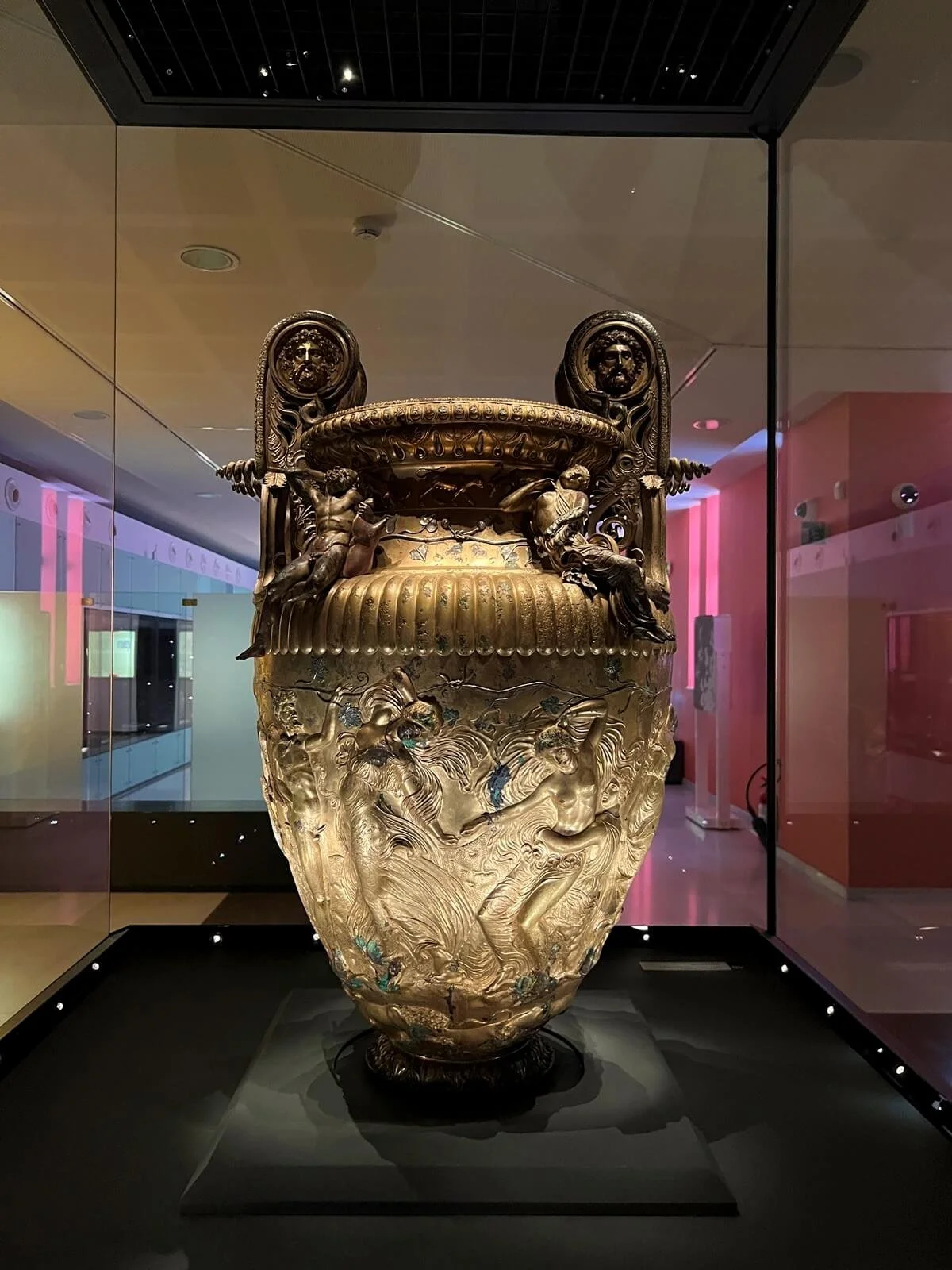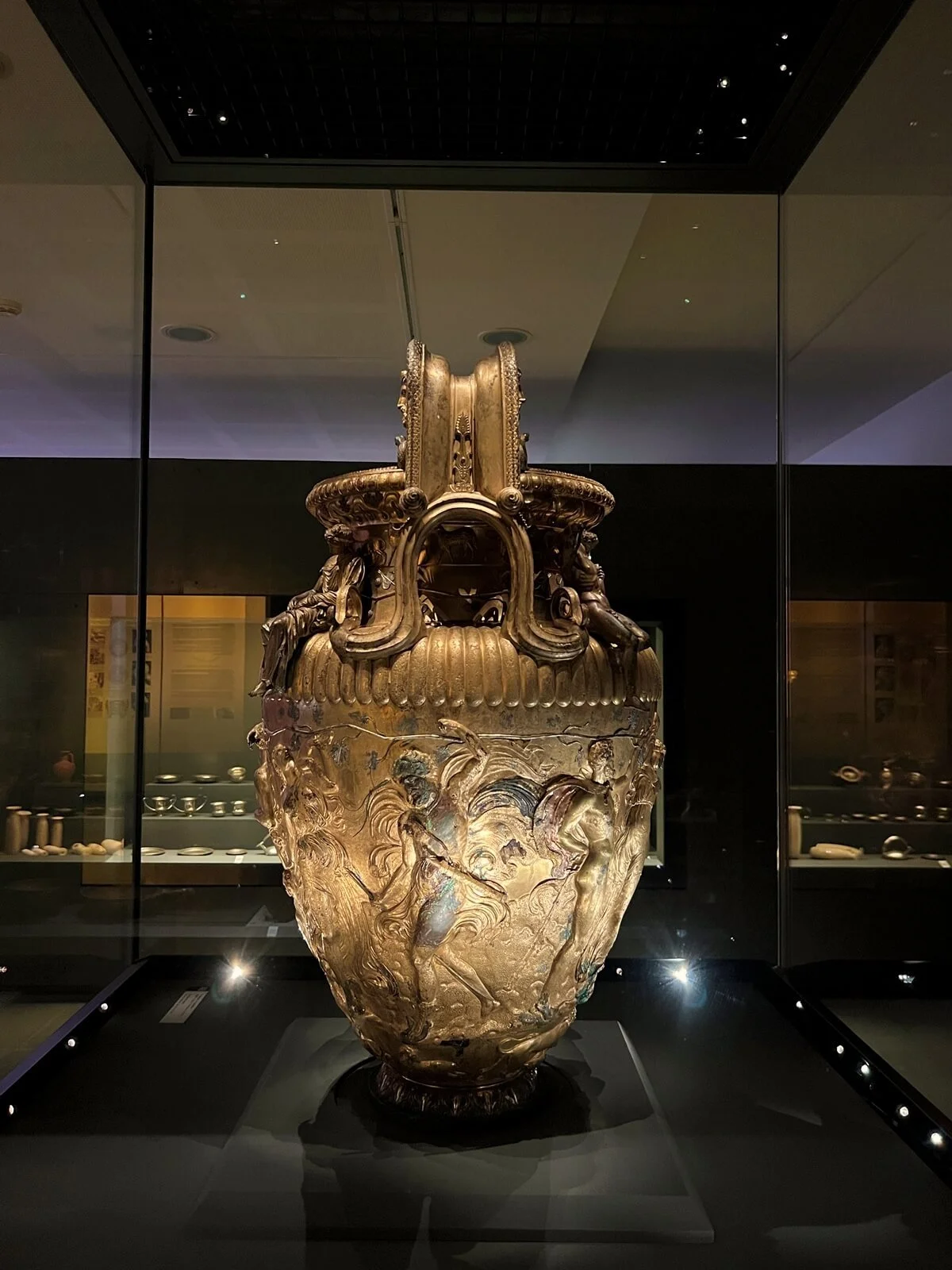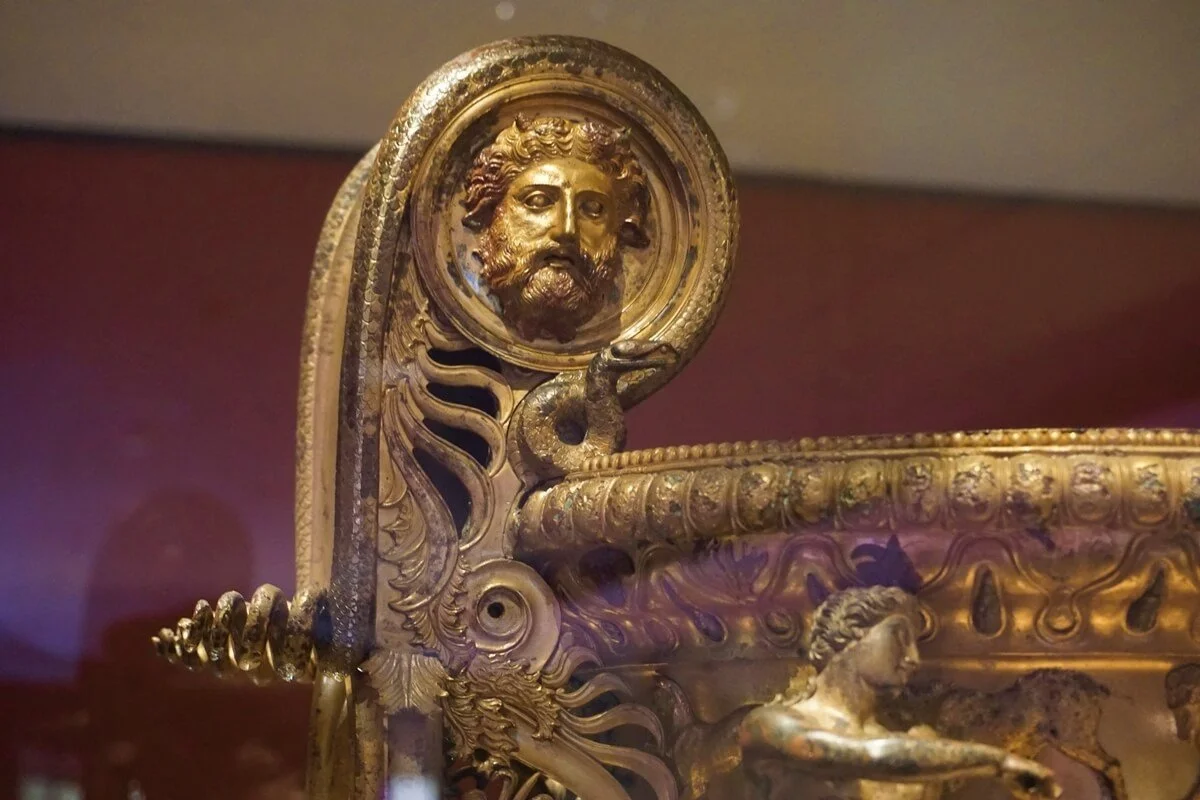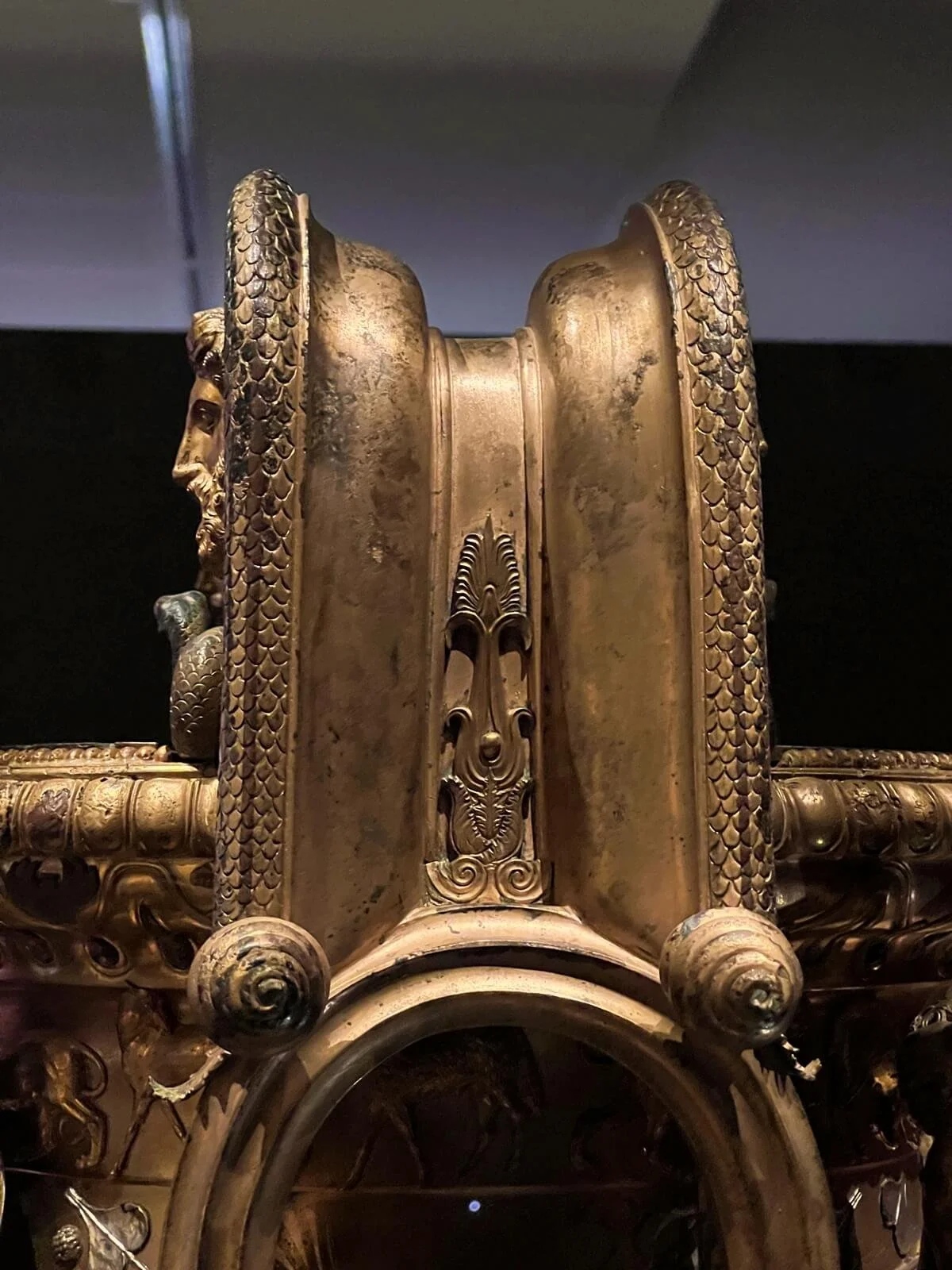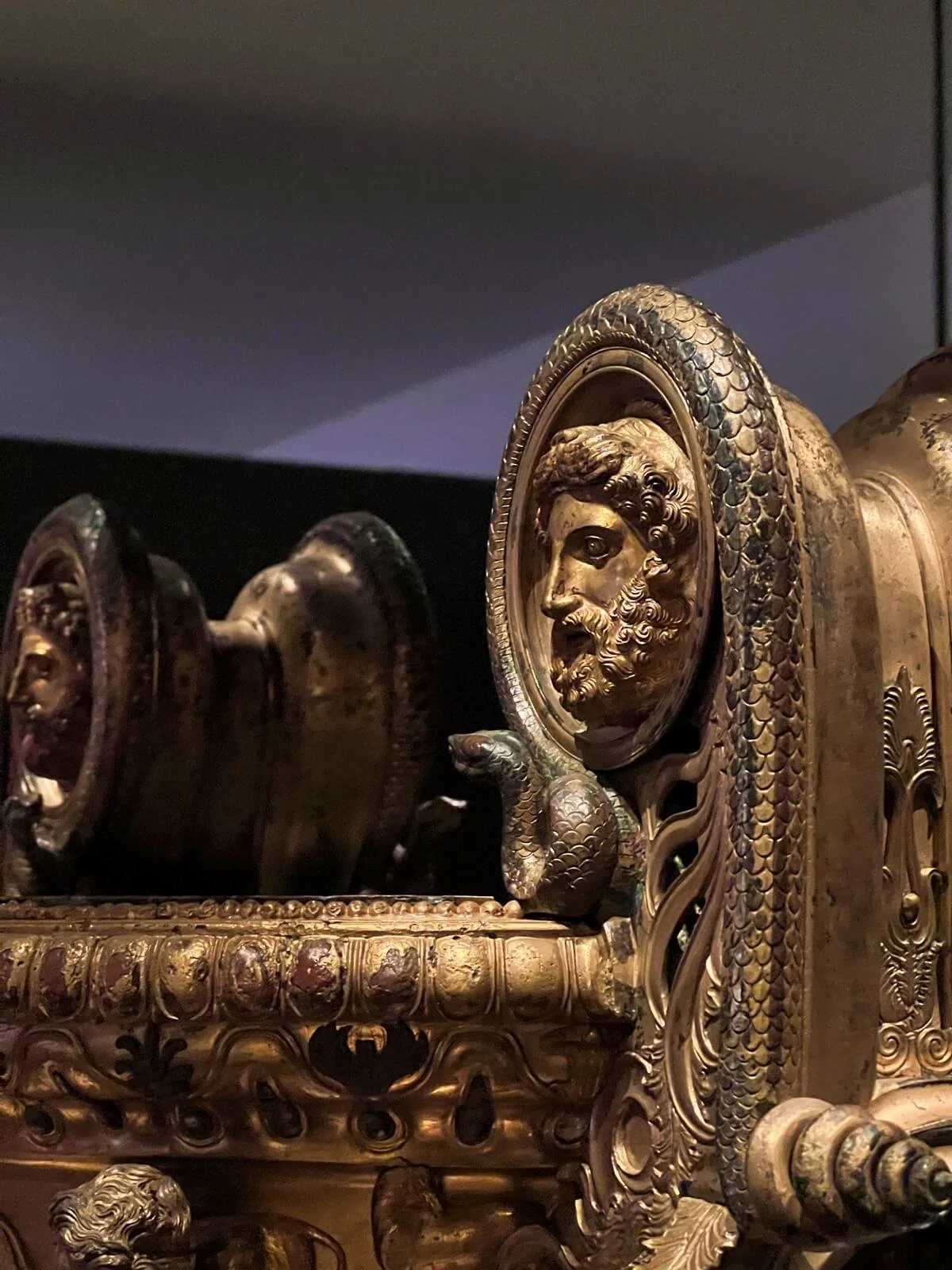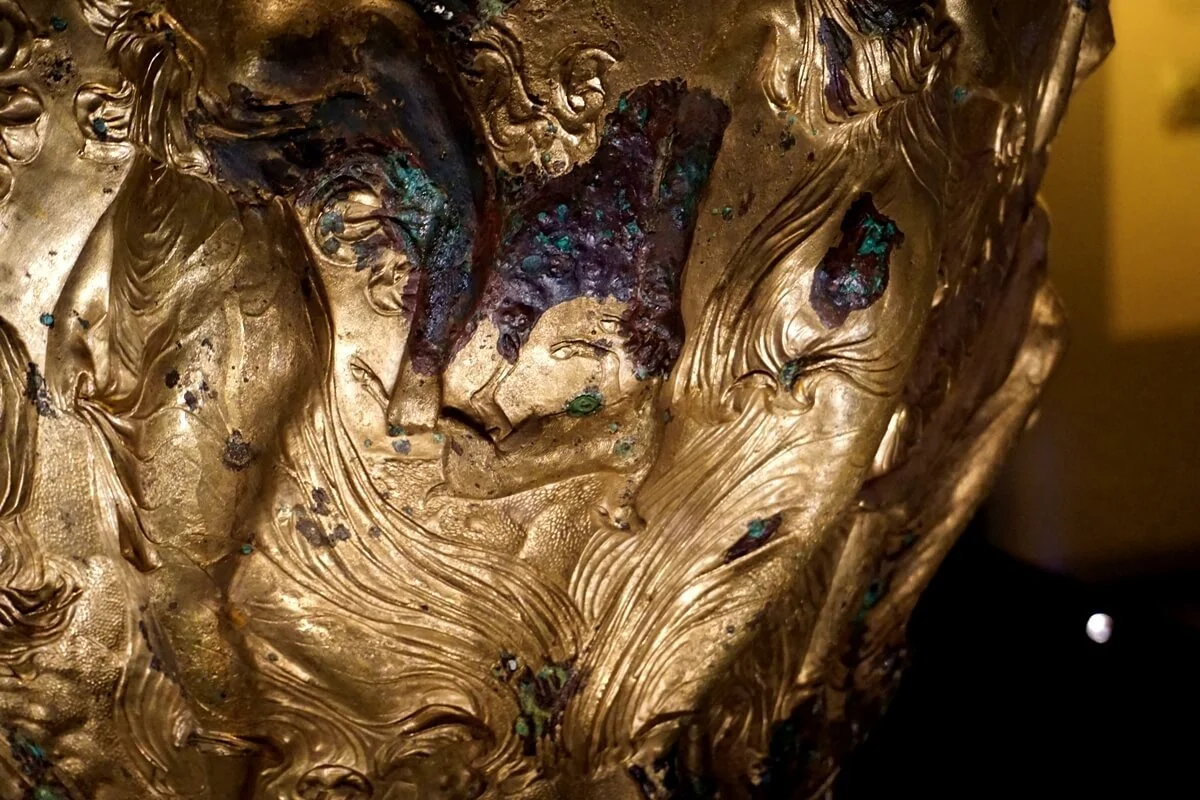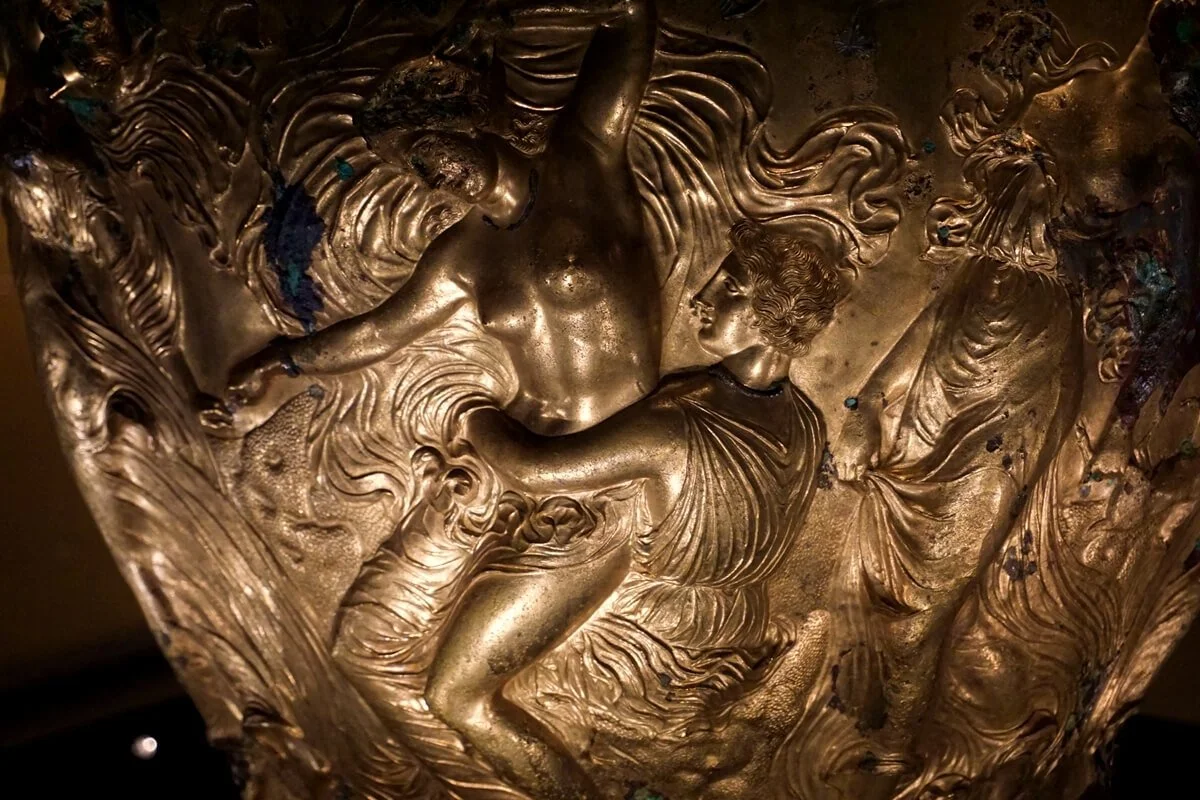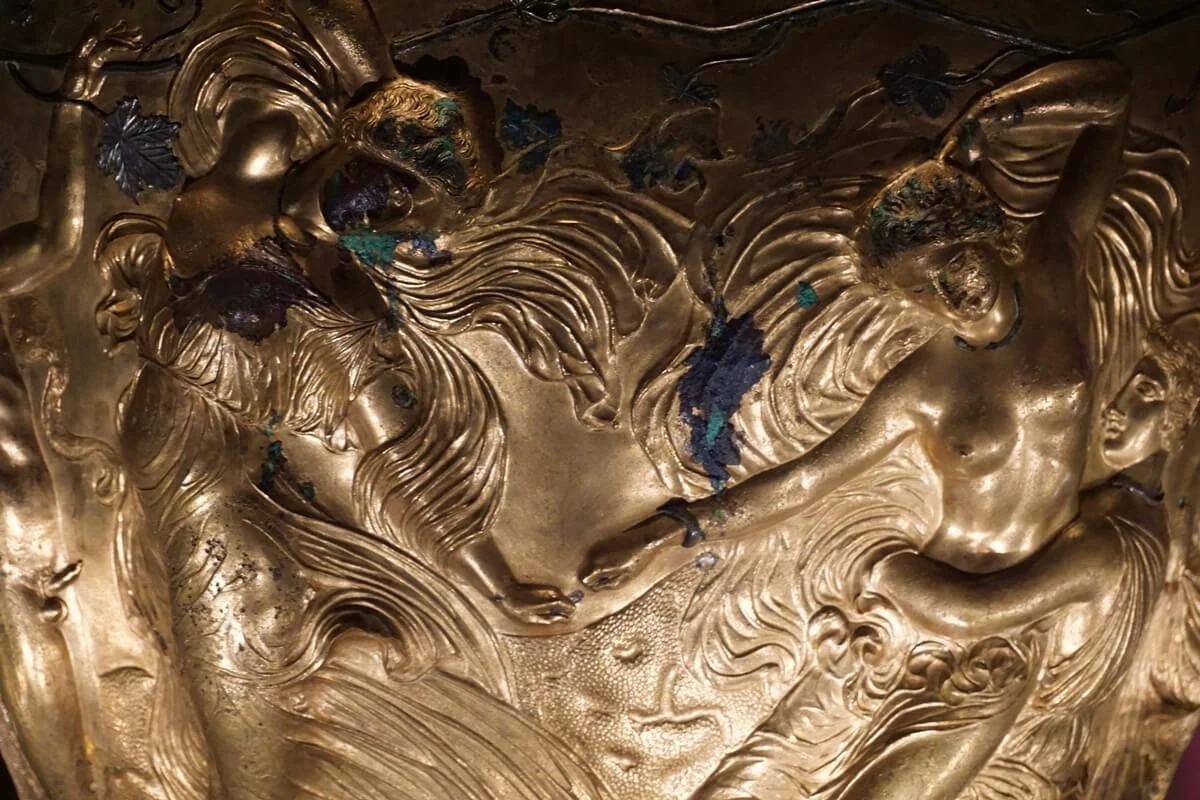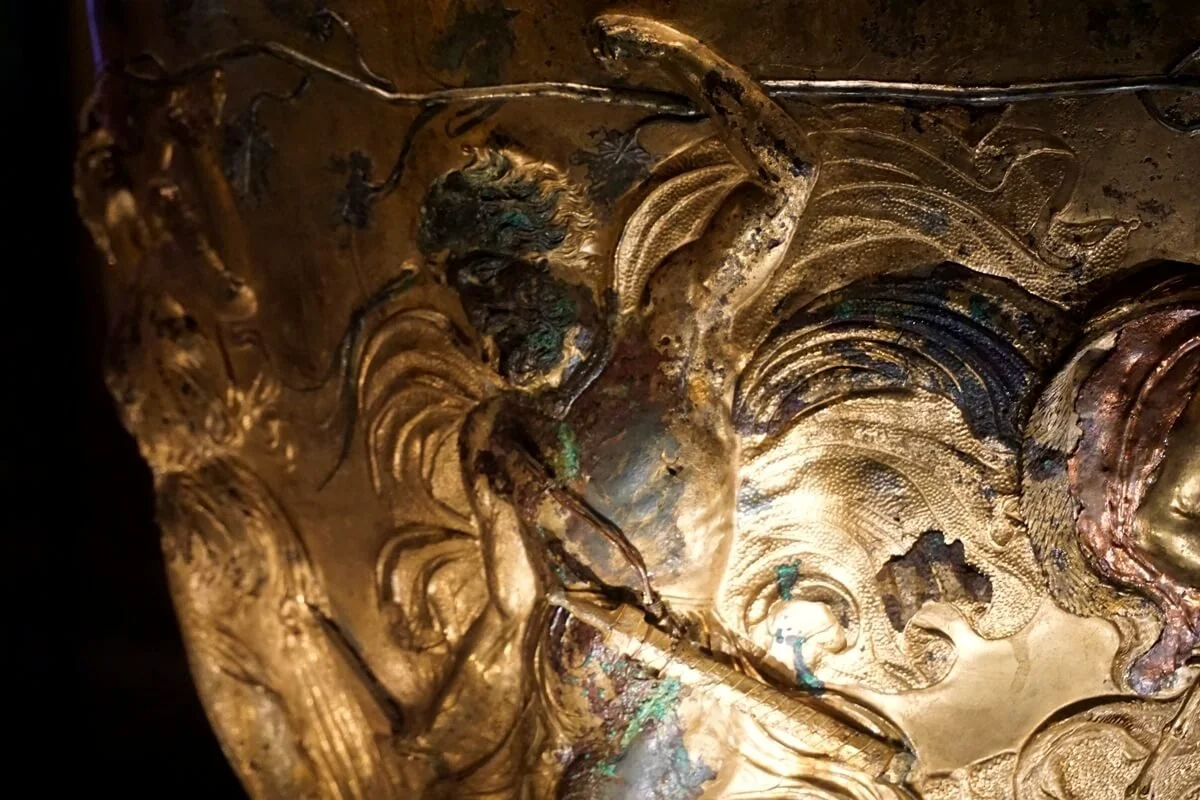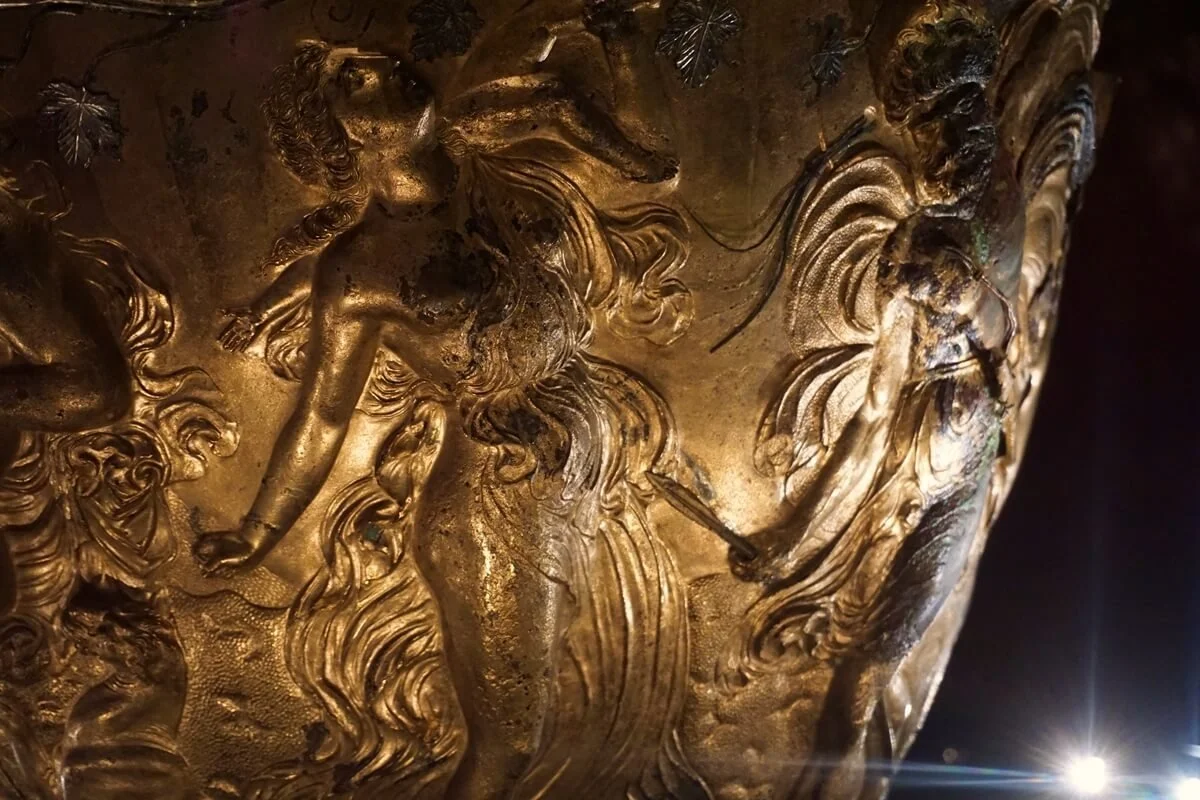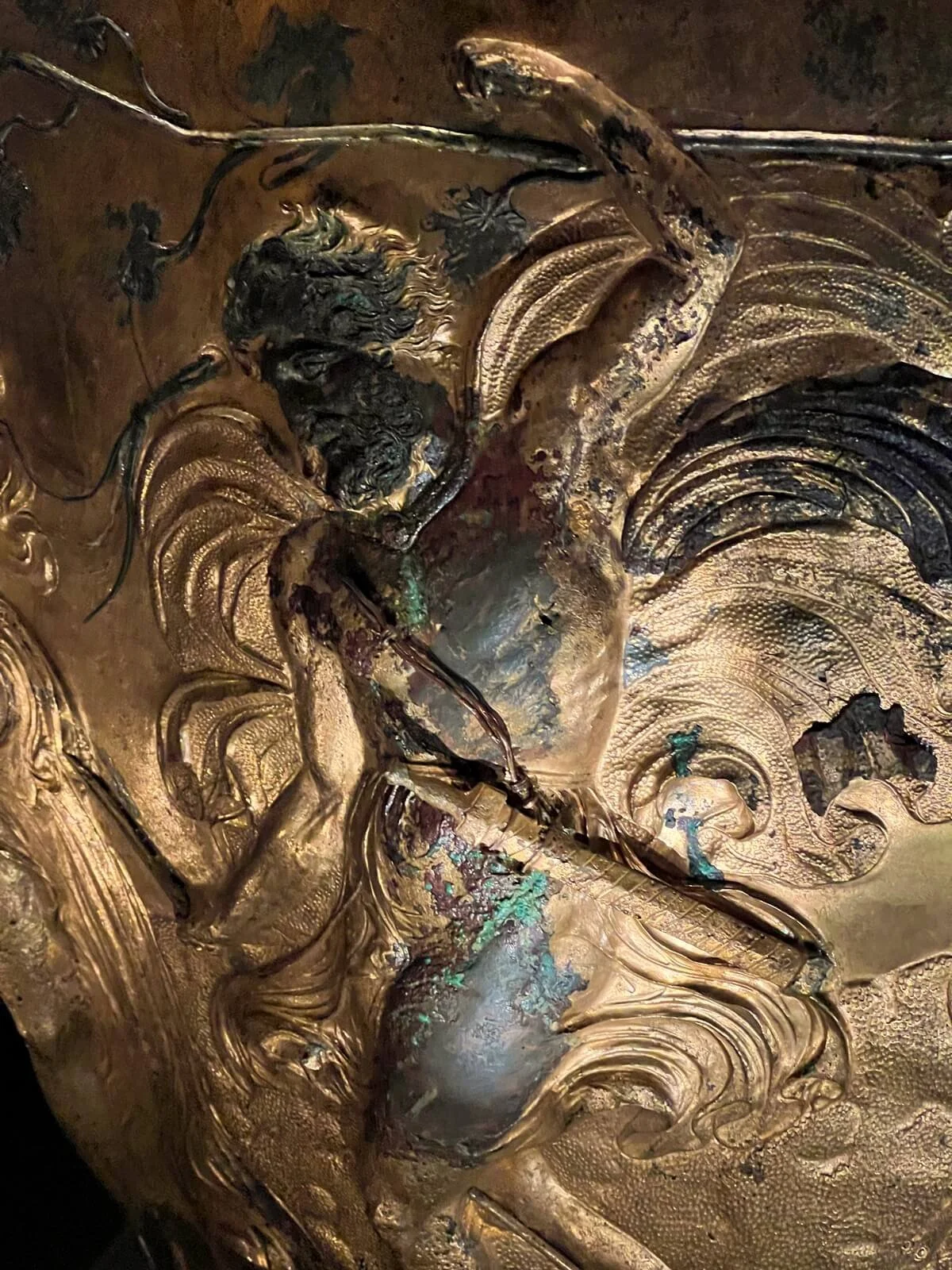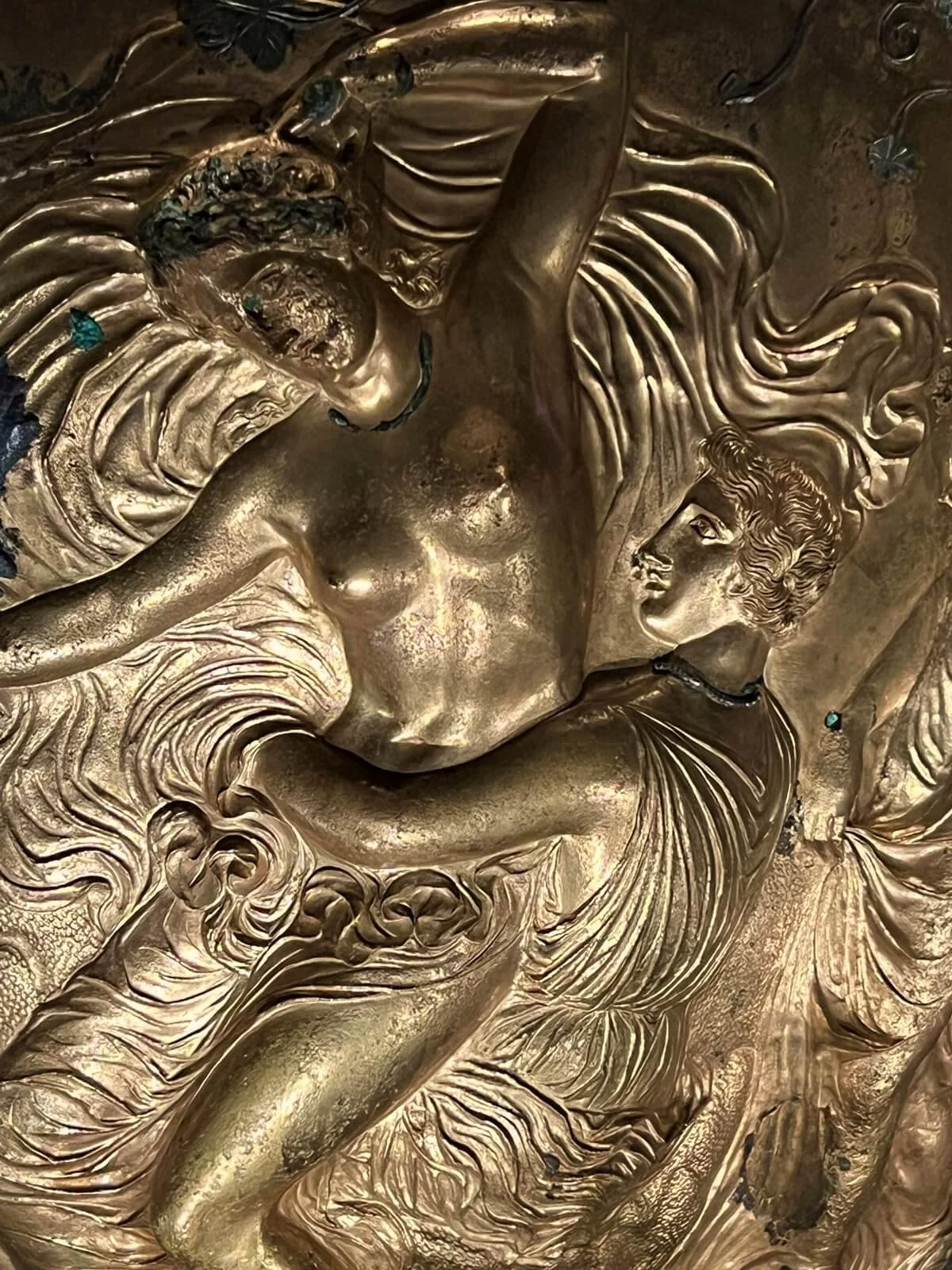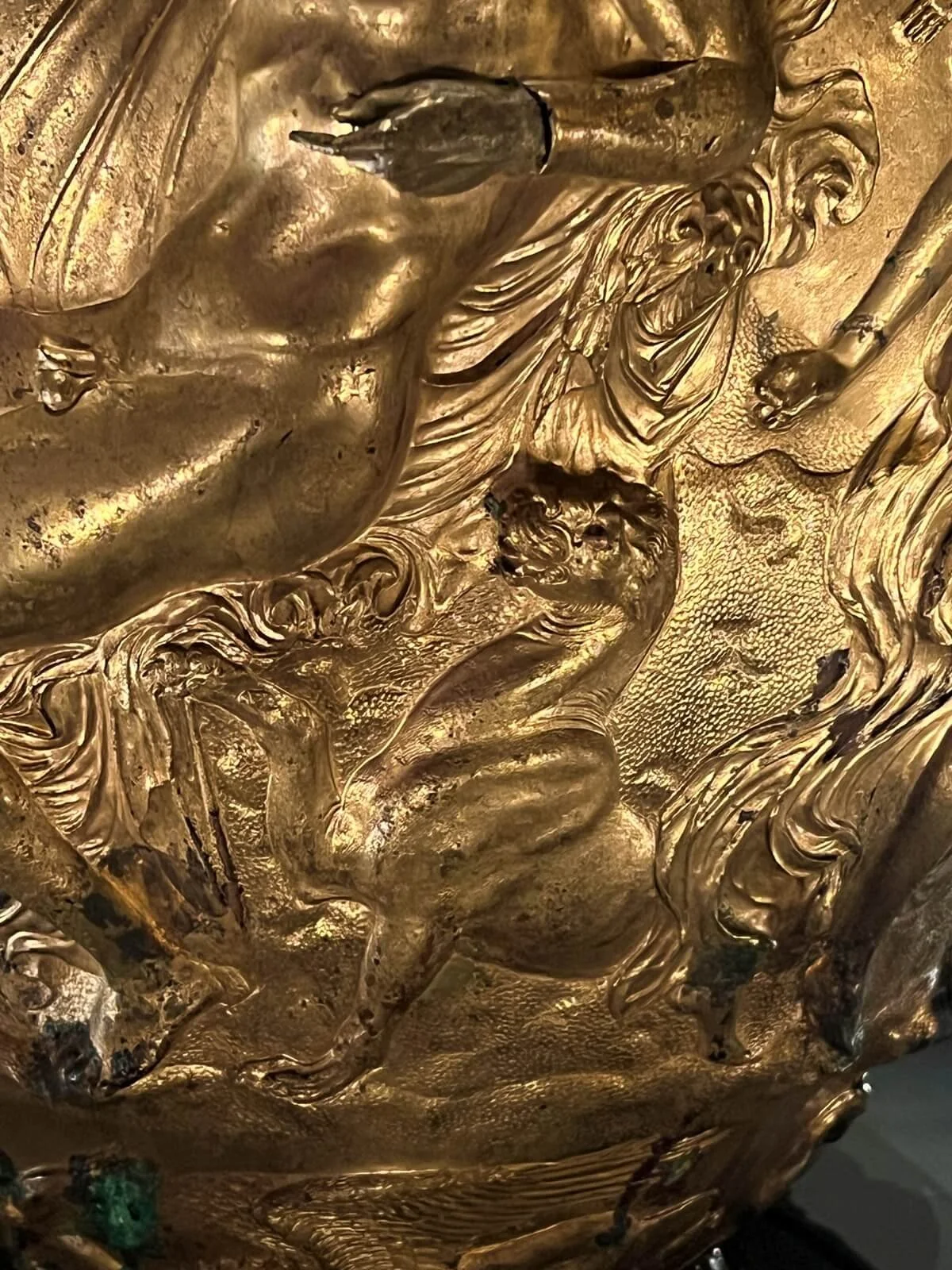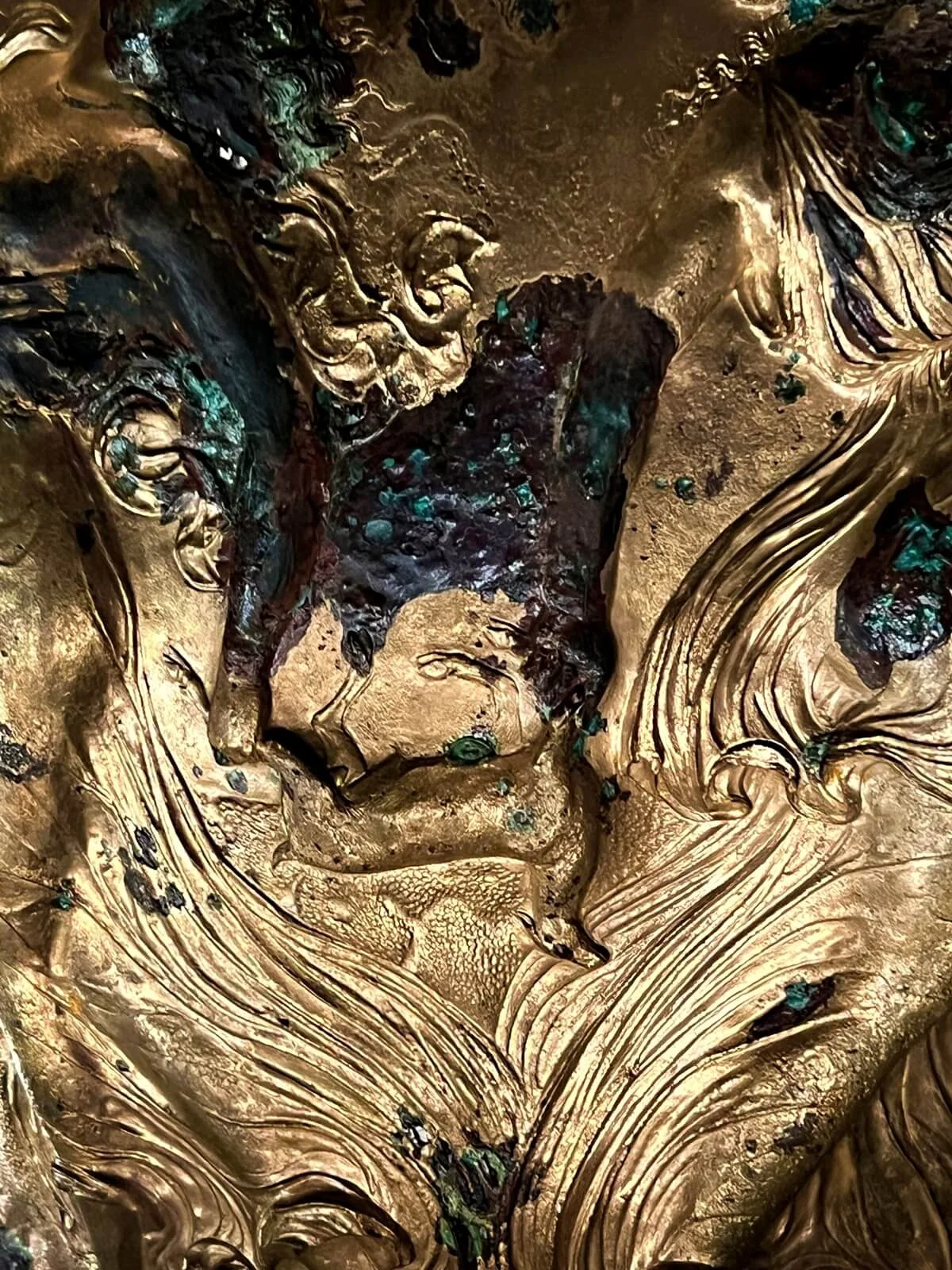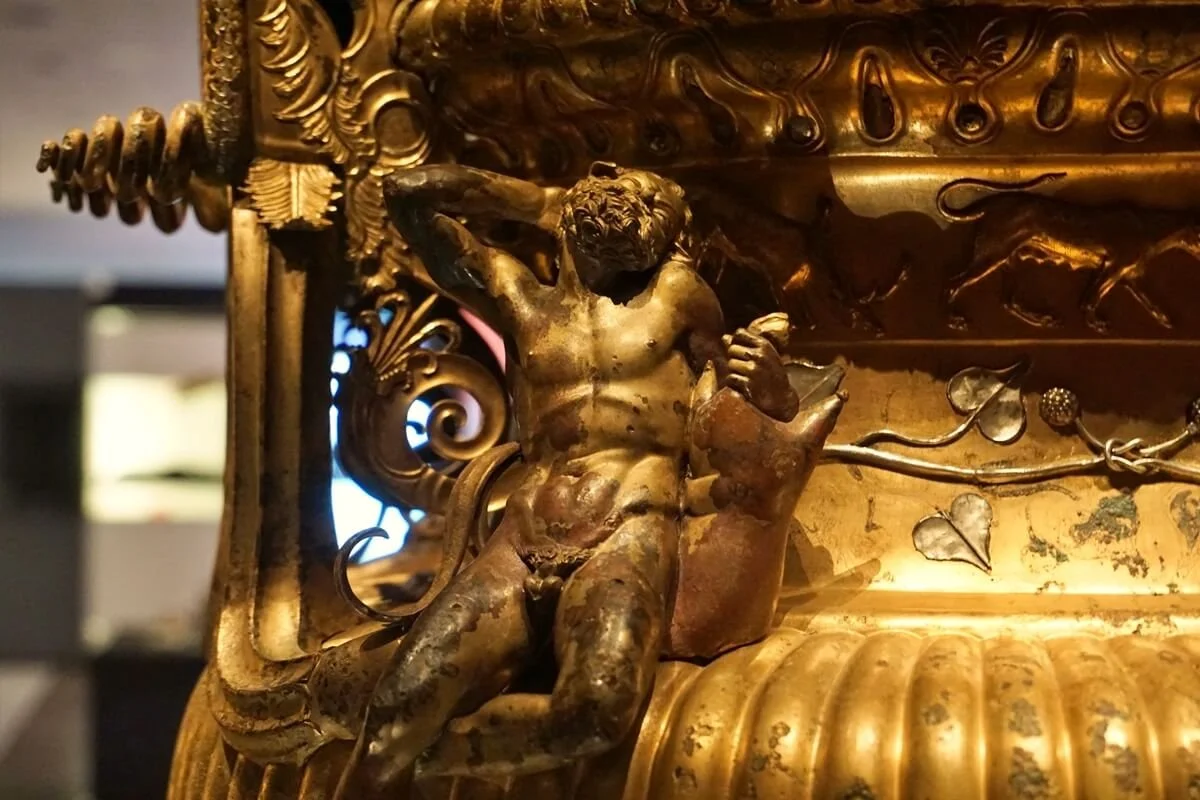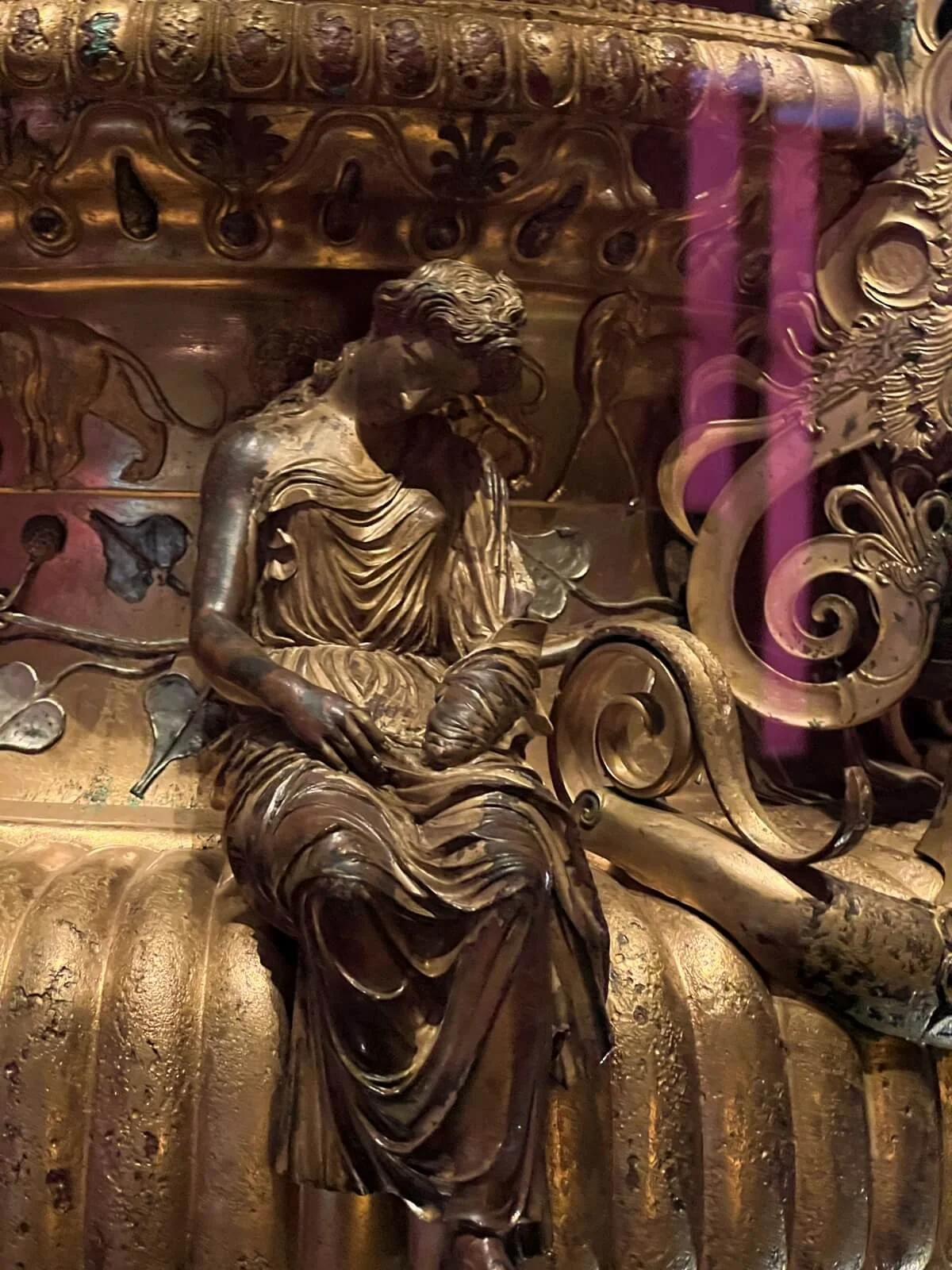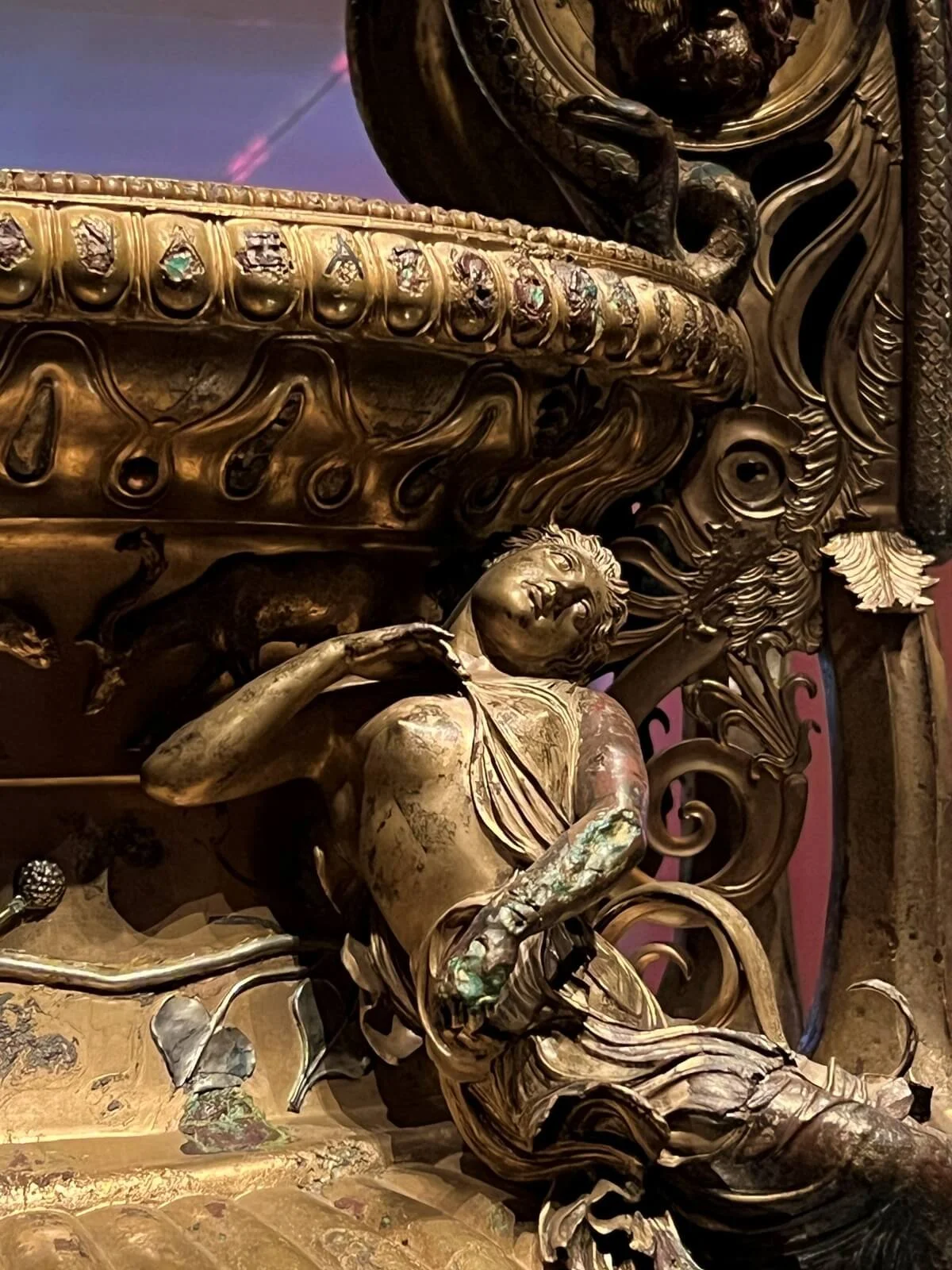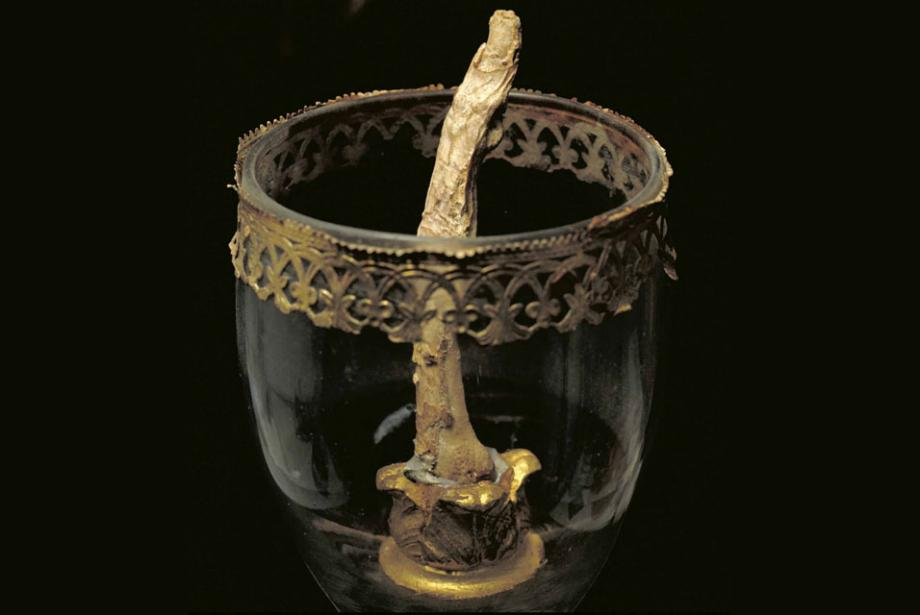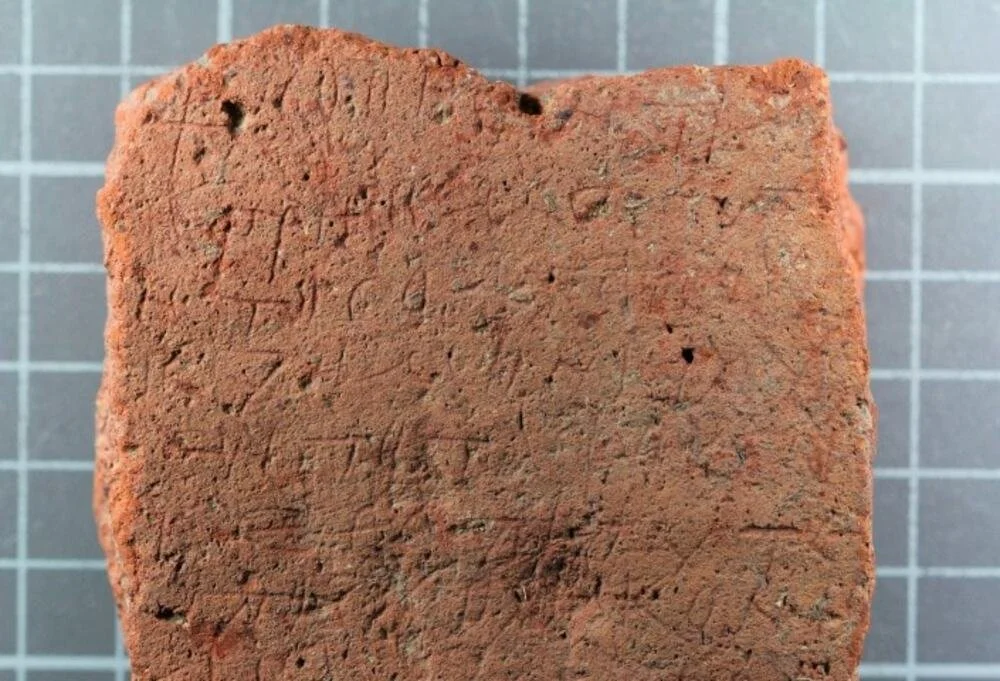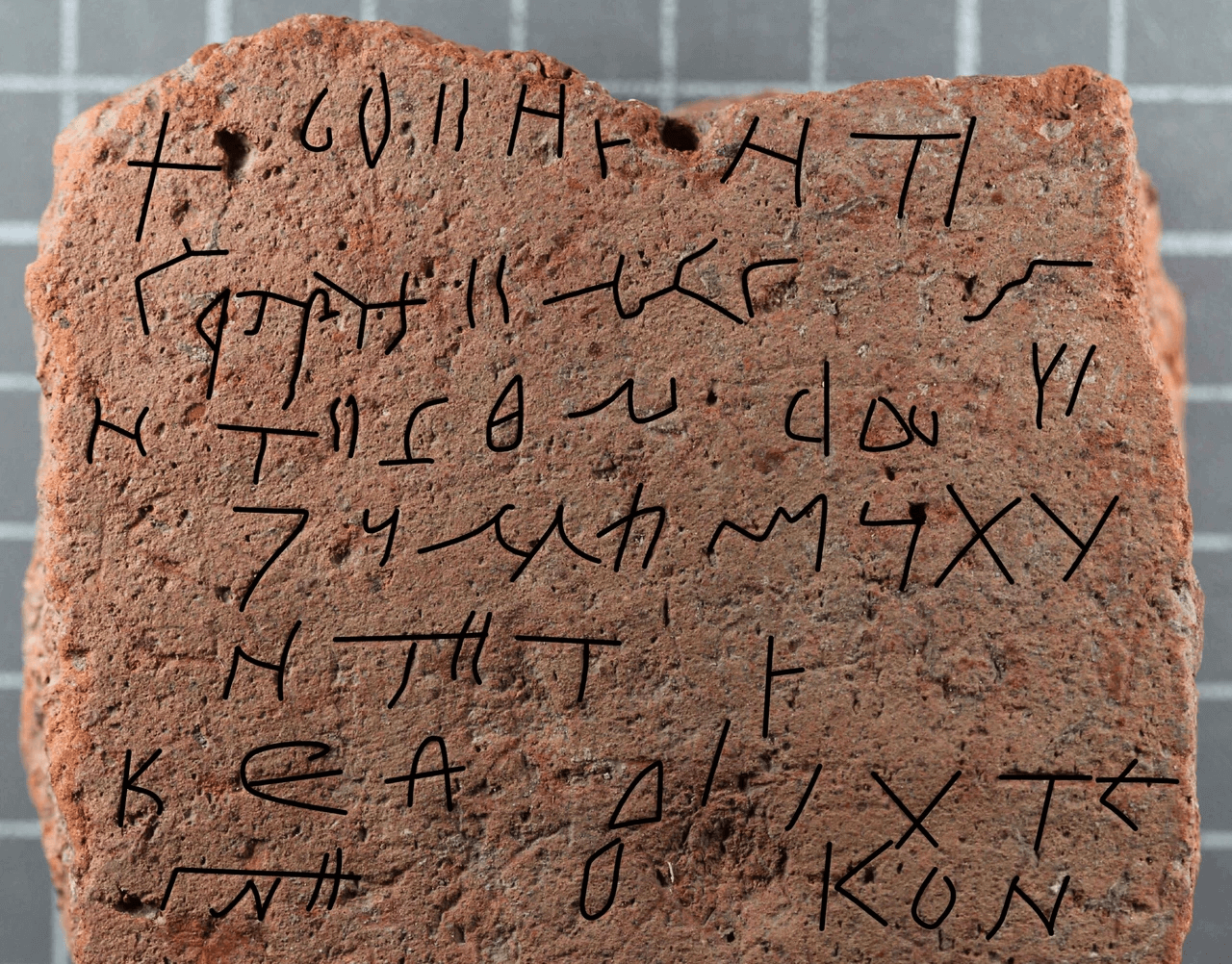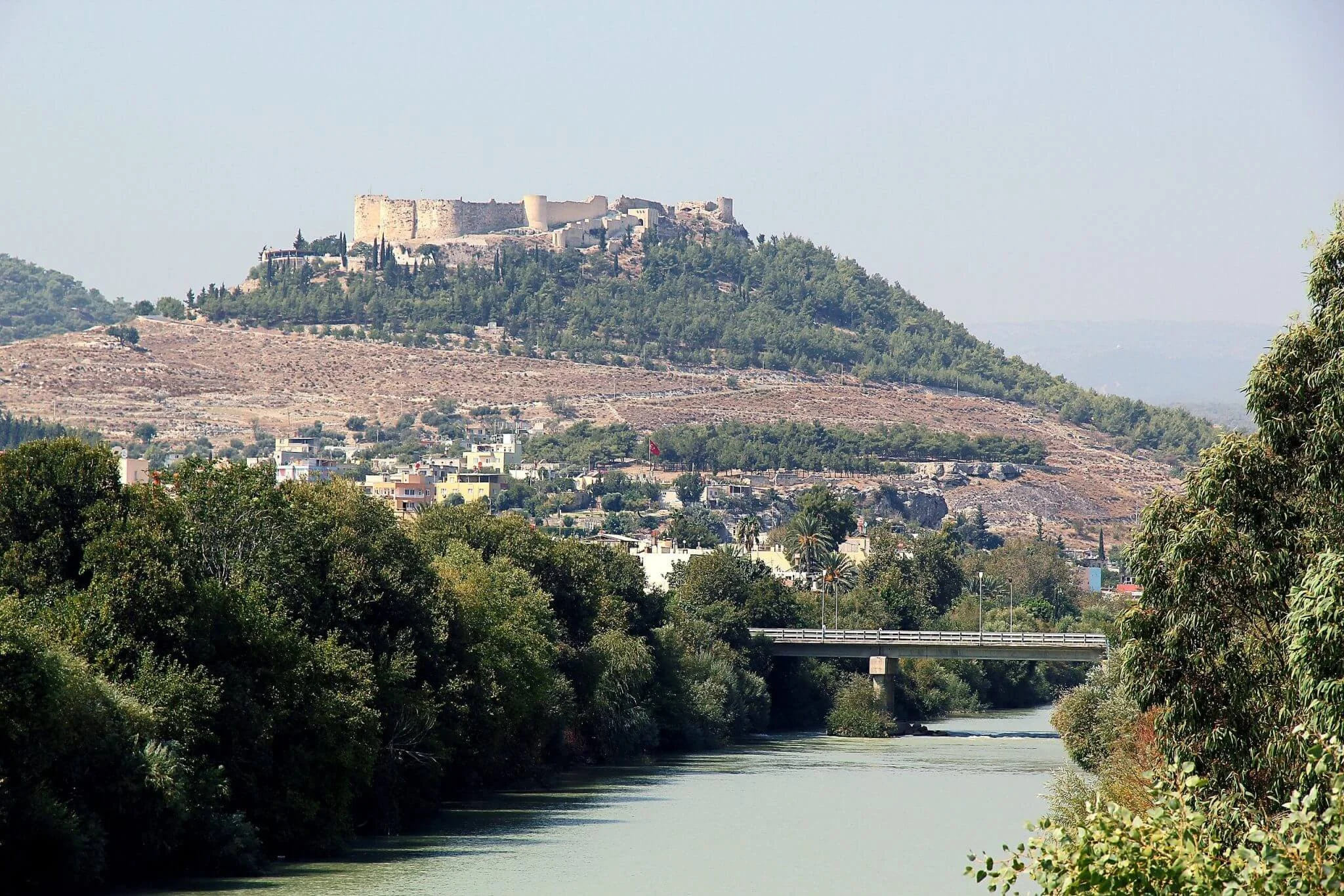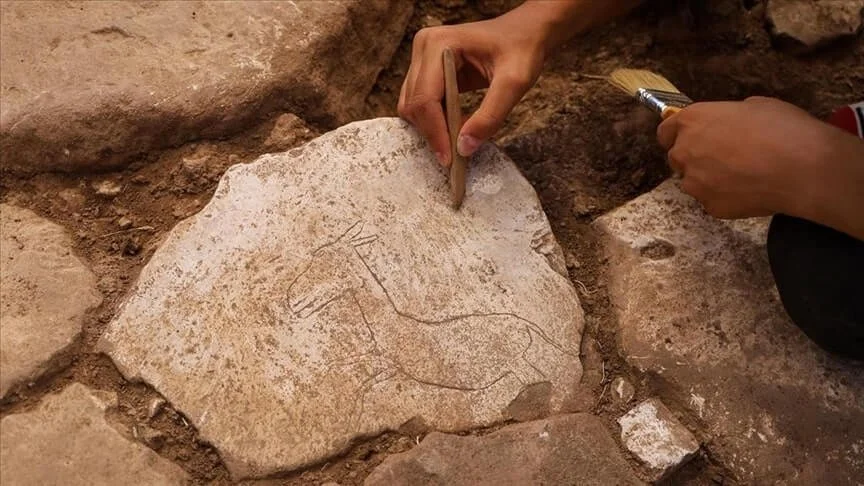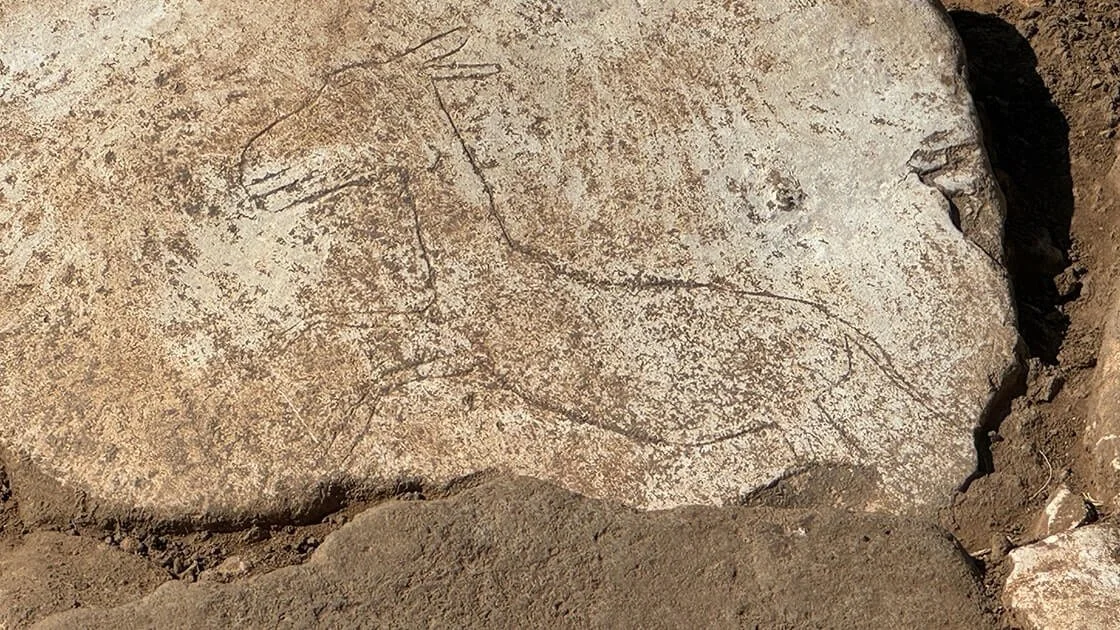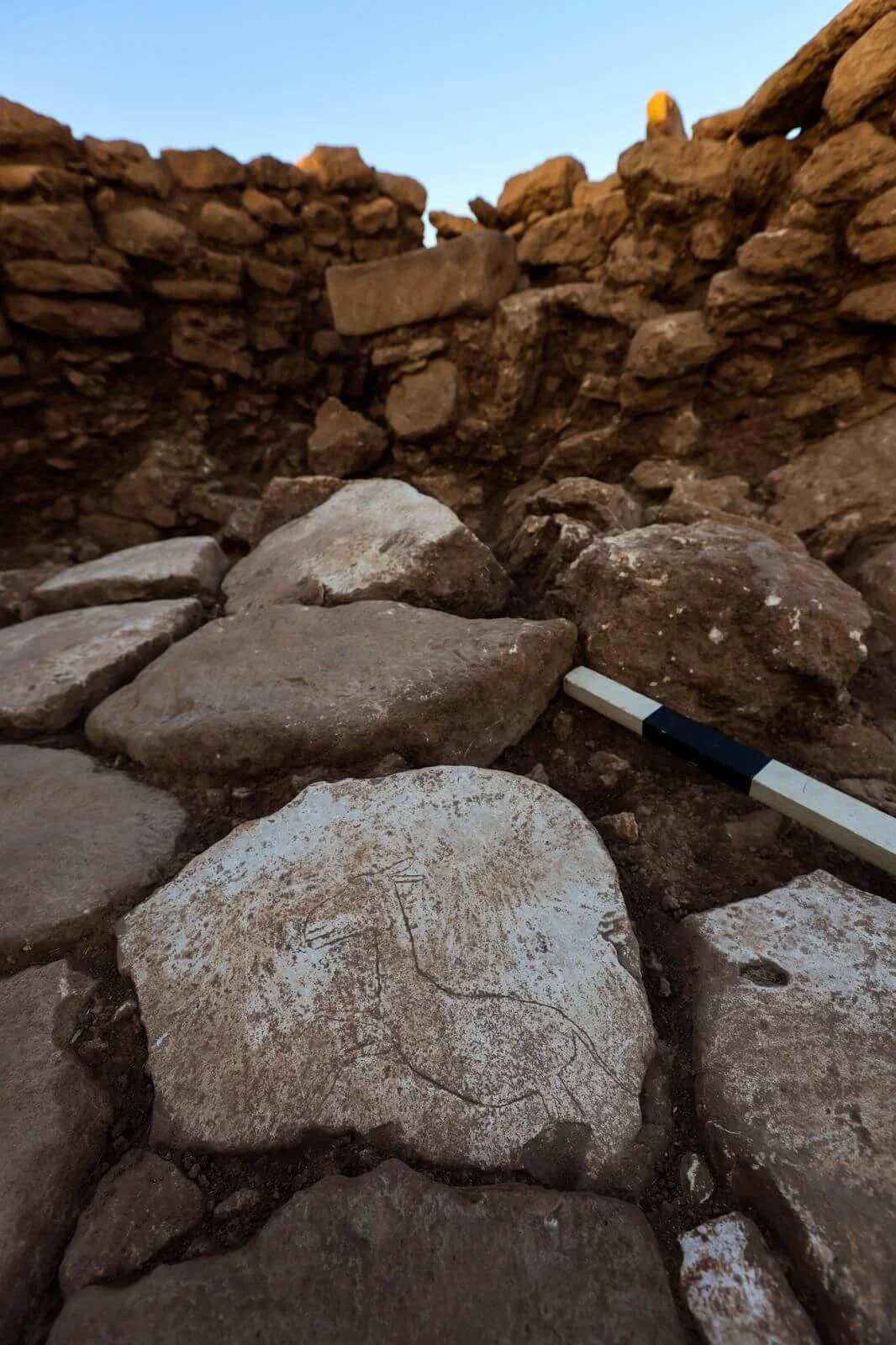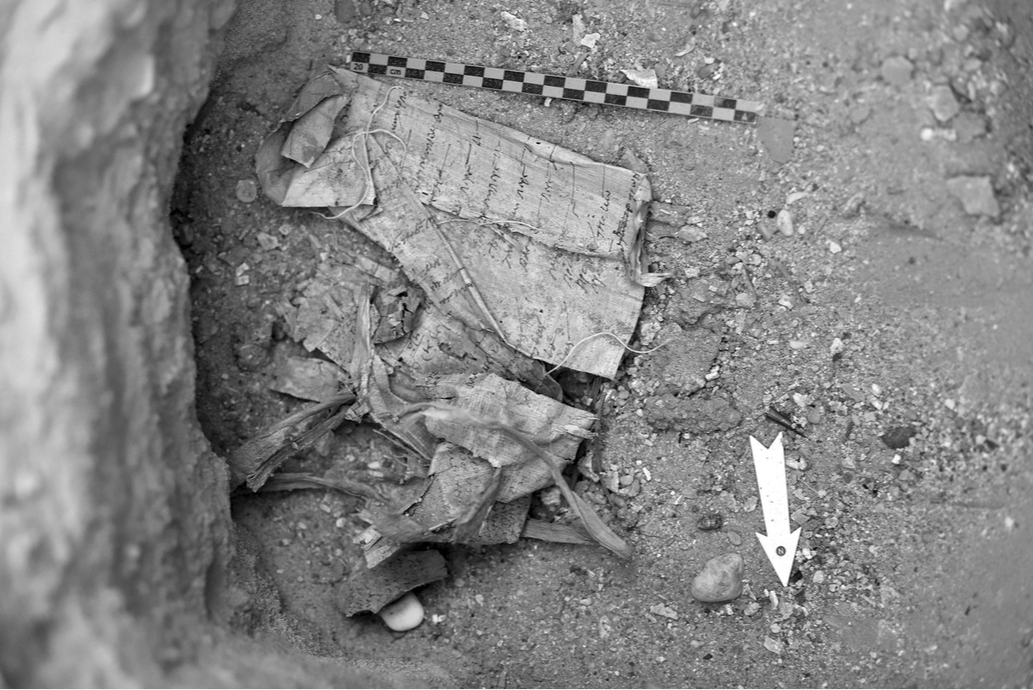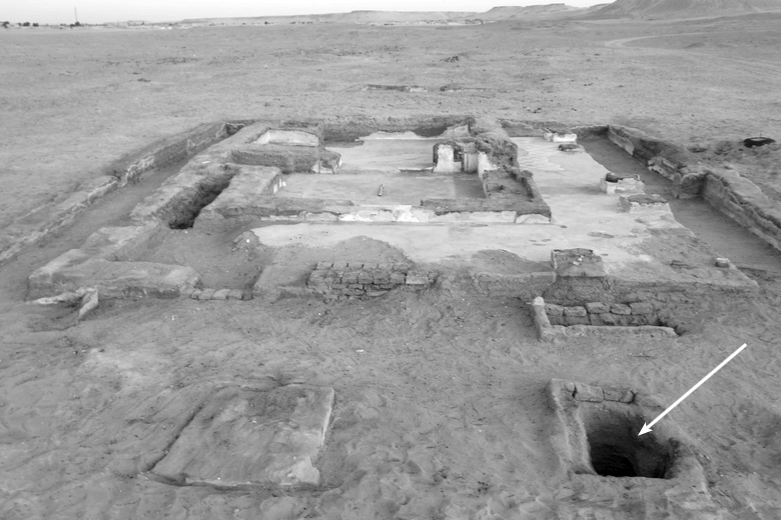In 1968, a routine day of fishing off the coast of Tuscany turned into a remarkable archaeological discovery when a fisherman’s net caught a glint of silver. What surfaced from the depths of the Mediterranean Sea was not an ordinary catch but a silver amphora, an extraordinary masterpiece now known as the Baratti Amphora. Dating back to the 4th century AD and thought to have originated from the ancient city of Antioch, this stunning artifact is now preserved at the Archaeological Museum of Populonia, where it continues to captivate historians, archaeologists, and art lovers alike.
This amphora is not only a testament to ancient craftsmanship but also a historical enigma. With 132 intricately designed medallions that seem to float seamlessly on its surface, it tells a story of divine figures and ancient festivities while leaving scholars puzzled about its exact purpose.
An Unexpected Discovery
The fisherman who hauled in the Baratti Amphora could not have imagined the significance of his catch. Pulled from the sea nearly two millennia after it was crafted, the amphora's surface gleamed with intricate silverwork, remarkably well-preserved despite its time underwater. After being carefully restored, the amphora found its way to the Archaeological Museum of Populonia in Italy, where it became one of the most celebrated artifacts in the museum’s collection.
Origin and Craftsmanship
Scholars believe that the Baratti Amphora likely originated from Antioch, an ancient city located in present-day Turkey, which was renowned for its silversmiths. The amphora’s craftsmanship, evident in its finely detailed decorations and seamless structure, suggests it was created by master artisans. The silver used in its construction speaks of wealth and prestige, indicating that the amphora was a luxurious item, perhaps commissioned by a wealthy Roman or an aristocratic family.
One of the most intriguing aspects of the Baratti Amphora is its decoration. The amphora is adorned with 132 medallions, each featuring intricate depictions of mythological scenes, animals, and symbolic imagery. Notably, among the most prominent designs is the portrayal of the god Dionysus, the god of wine, and his lover, Ariadne, surrounded by satyrs, maenads, and other symbols associated with the god’s divine revelry. The scene evokes a sense of celebration and abundance, fitting for a vessel that may have been used to store or serve wine during festive occasions.
The Mystery of Its Function
Despite its association with Dionysus, the exact function of the Baratti Amphora remains unclear. Its size, materials, and craftsmanship suggest it was more than just a practical container. The amphora could have been used in religious rituals, elite banquets, or ceremonial gatherings, but its specific purpose is still debated.
One theory is that it may have been a high-status offering to the gods, placed in a temple or sanctuary. Another possibility is that it was a display piece, meant to show off the wealth and artistic tastes of its owner. Given the amphora’s connection to Dionysus, the god of wine and festivity, it is plausible that it was used for wine, either as a container for storing precious vintages or as a ceremonial vessel during celebratory rites.
The Puzzle of the Medallions
The amphora’s medallions are a marvel of ancient artistry, yet they also present a puzzle for modern scholars. Unlike many other decorated vessels of the time, the medallions appear to have no visible seams, raising questions about the techniques used by the silversmiths who crafted it. Each medallion is unique, depicting a wide array of scenes, from mythological figures to animals and intricate patterns, but their arrangement and meaning remain elusive.
Could these medallions tell a specific story, or were they meant to symbolize a broader concept, such as the abundance of life or the cycle of nature? Perhaps they were chosen to evoke the presence of the divine, making the amphora not just a functional object but also a sacred one. These questions, and the intricate beauty of the medallions themselves, add to the aura of mystery that surrounds the amphora.
The Journey from Antioch to Tuscany
Another mystery that continues to fascinate scholars is how the Baratti Amphora ended up off the coast of Tuscany. Antioch, in the eastern Roman Empire, was a hub of culture and trade during the 4th century, so it is plausible that the amphora traveled along one of the many trade routes that crisscrossed the Mediterranean. It may have been part of a merchant’s wares, destined for the villas of Roman elites, or it could have been a diplomatic gift, exchanged between powerful families or officials.
The amphora’s journey could have been cut short by a shipwreck, as the waters off the Tuscan coast are known for the many vessels lost over the centuries. If so, the amphora may have lain undiscovered for centuries, hidden beneath the waves, until that fateful day in 1968 when a fisherman’s net pulled it back into the light.
A Timeless Treasure
Today, the Baratti Amphora stands as a testament to the artistry and mystery of the ancient world. Its seamless silver medallions, the evocative images of Dionysus and Ariadne, and its enigmatic purpose continue to inspire awe and curiosity. Displayed proudly at the Archaeological Museum of Populonia, the amphora invites us to ponder not only the craftsmanship of antiquity but also the mysteries of its creation and its long journey through history.
As scholars continue to study this artifact, the Baratti Amphora remains a symbol of the beauty and enigma of the ancient past, a treasure both literally and figuratively recovered from the depths of time.






